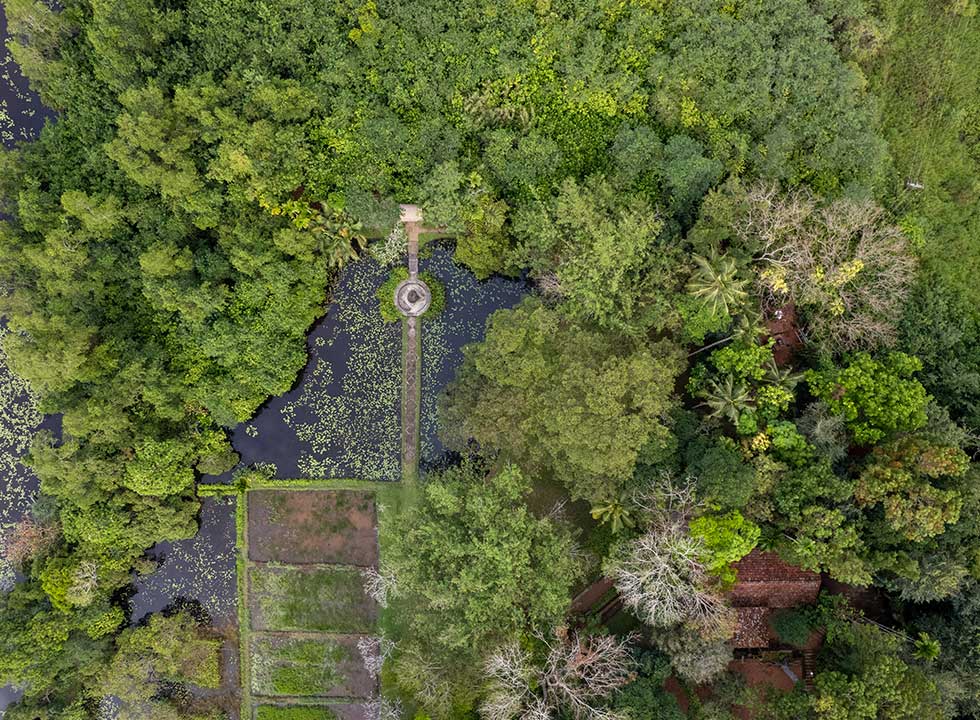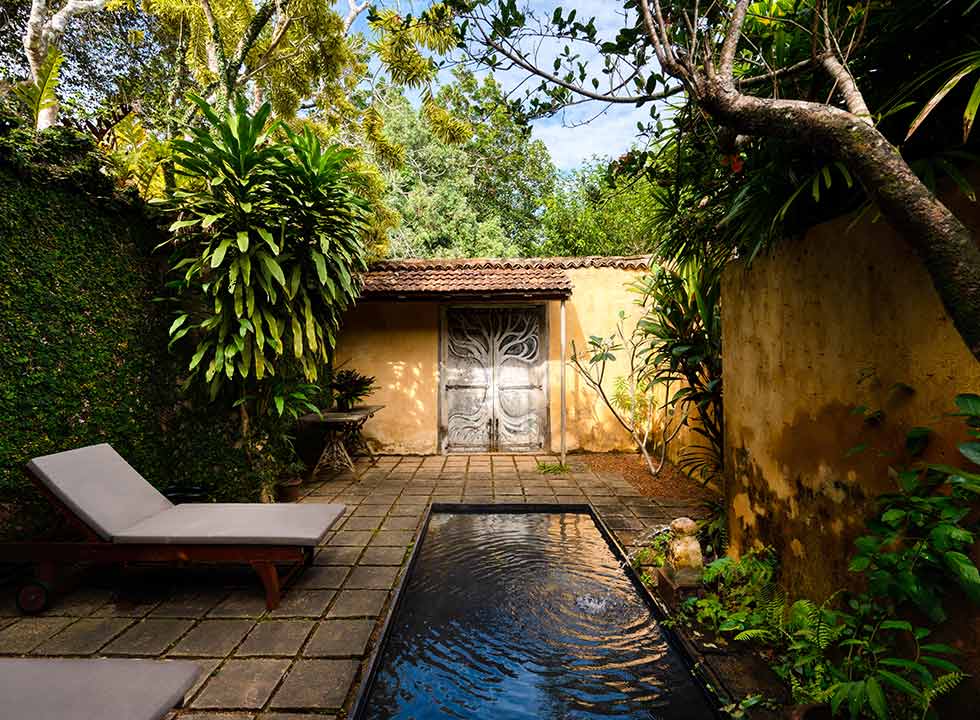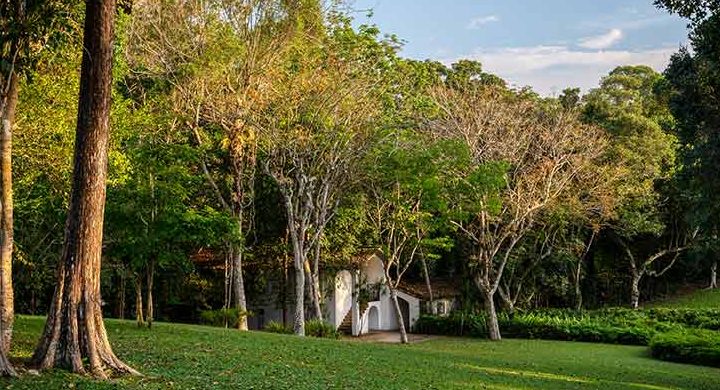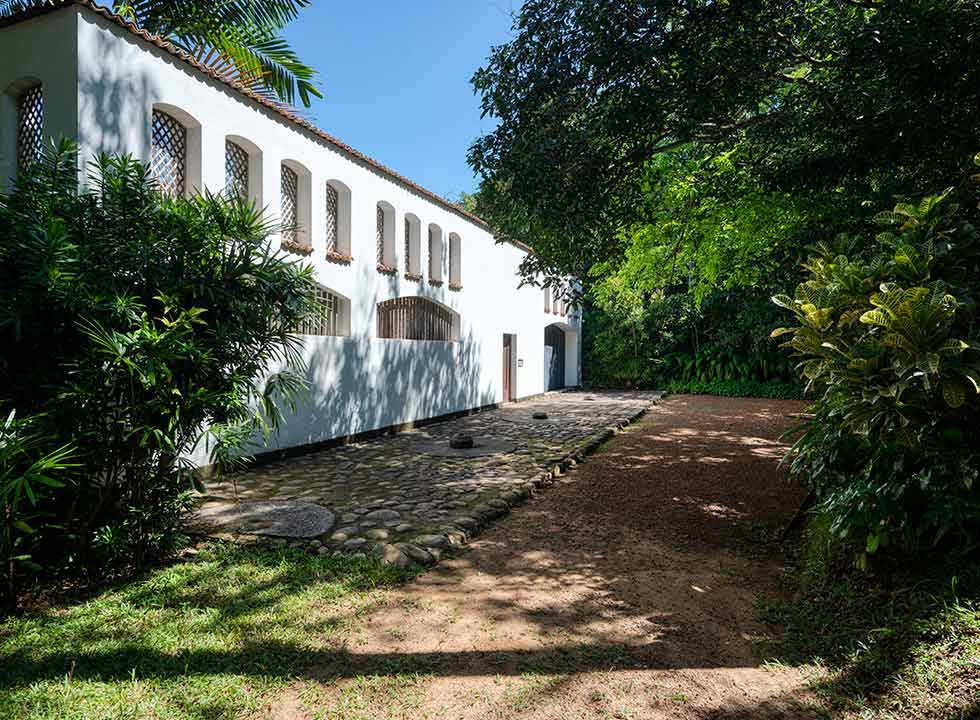


CHECK RATES AND AVAILABILITY
Your island escape, just a few clicks away.
Check in | Check out
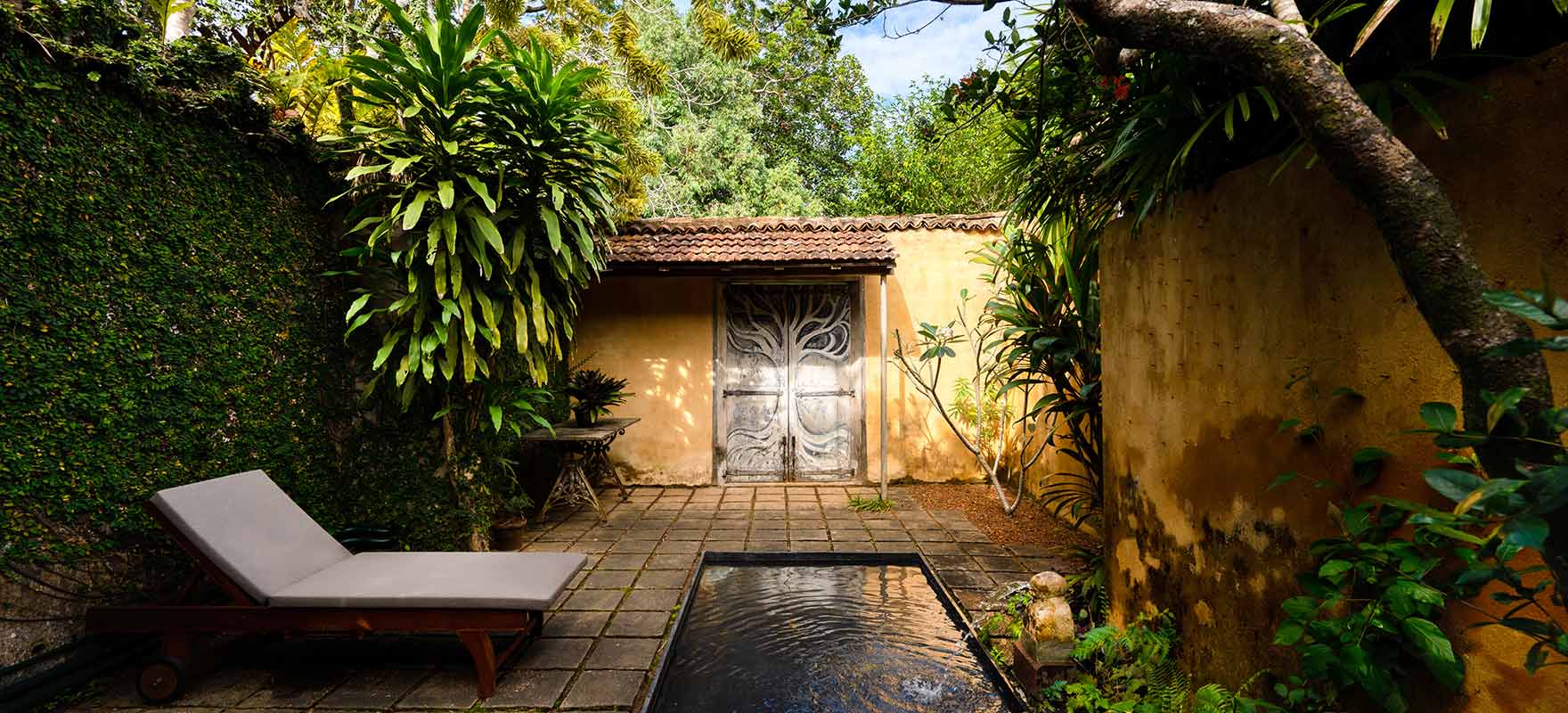
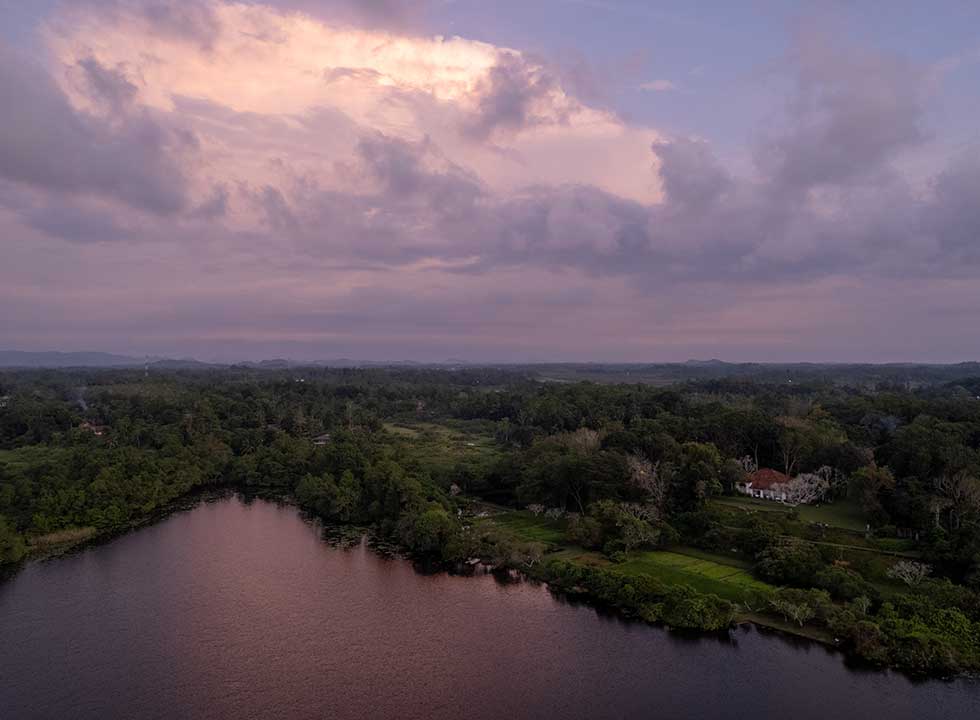
“Looking back on the making of the garden, seeing it as it is now, it seems to me to be almost inevitable that it should be there. The first decision to make a garden was taken at a time when – to me – the world seemed stable, almost anything one wanted to do seemed possible, and the time was there to do it.”
The Water Gate, located at the edge of the Dedduwa lake is the departure point for boat rides across the lake, is guarded by a lone leopard sculpture created by artist Lydia Duchini, which happens to be one of many mythological symbols found on the estate.
Artists of the time – the likes of Laki Senanayake, Donald Friend, and Lydia Duchini – were central collaborators in the agenda to integrate mythological symbols into Bawa’s buildings (Sansoni & Taylor, 1989).
“There is no winter in Sri Lanka – only monsoons change the mood and light, green ever richer with the rain and the clarity of light after rain. The landscape is large in scale and small village houses disappear behind foliage, the greatest beauty being sunlight filtering through leaves.
